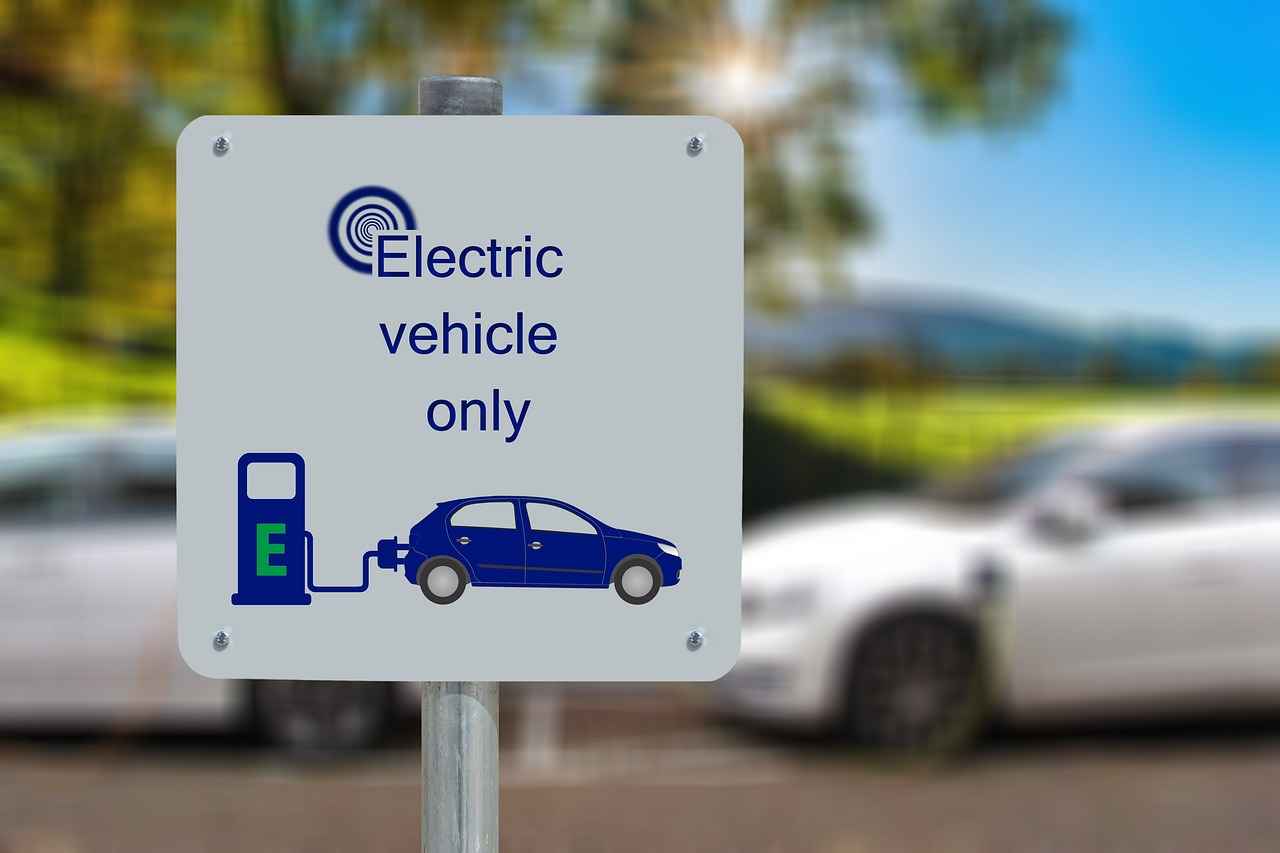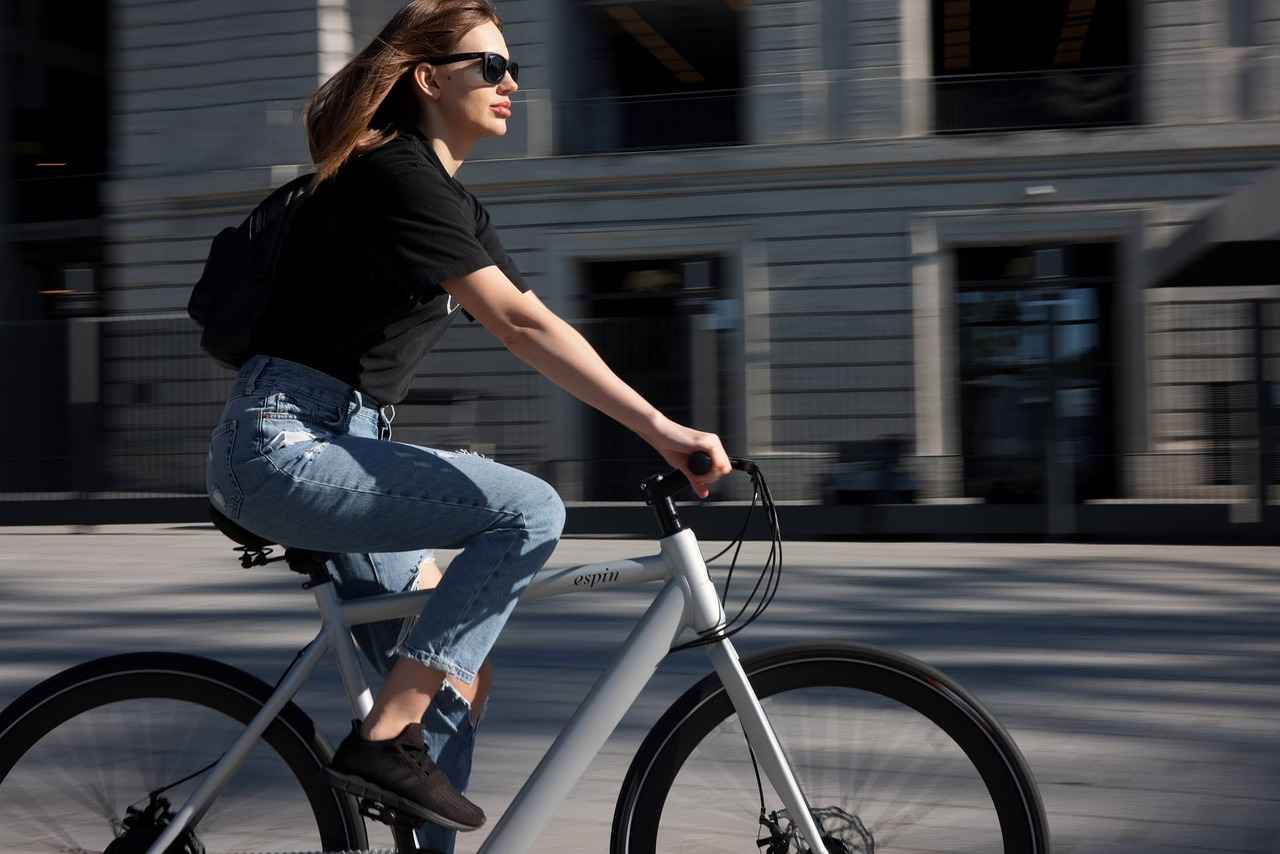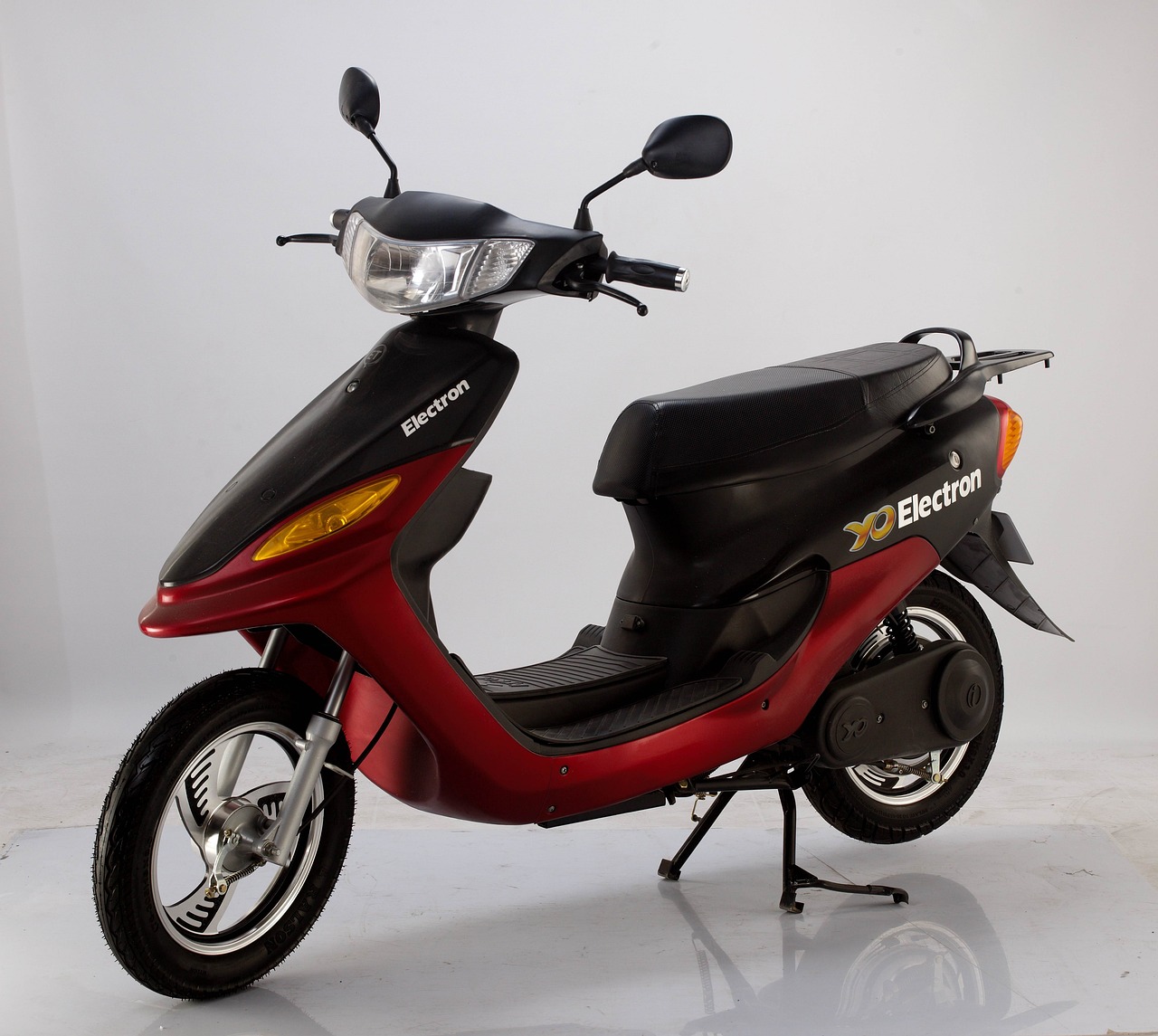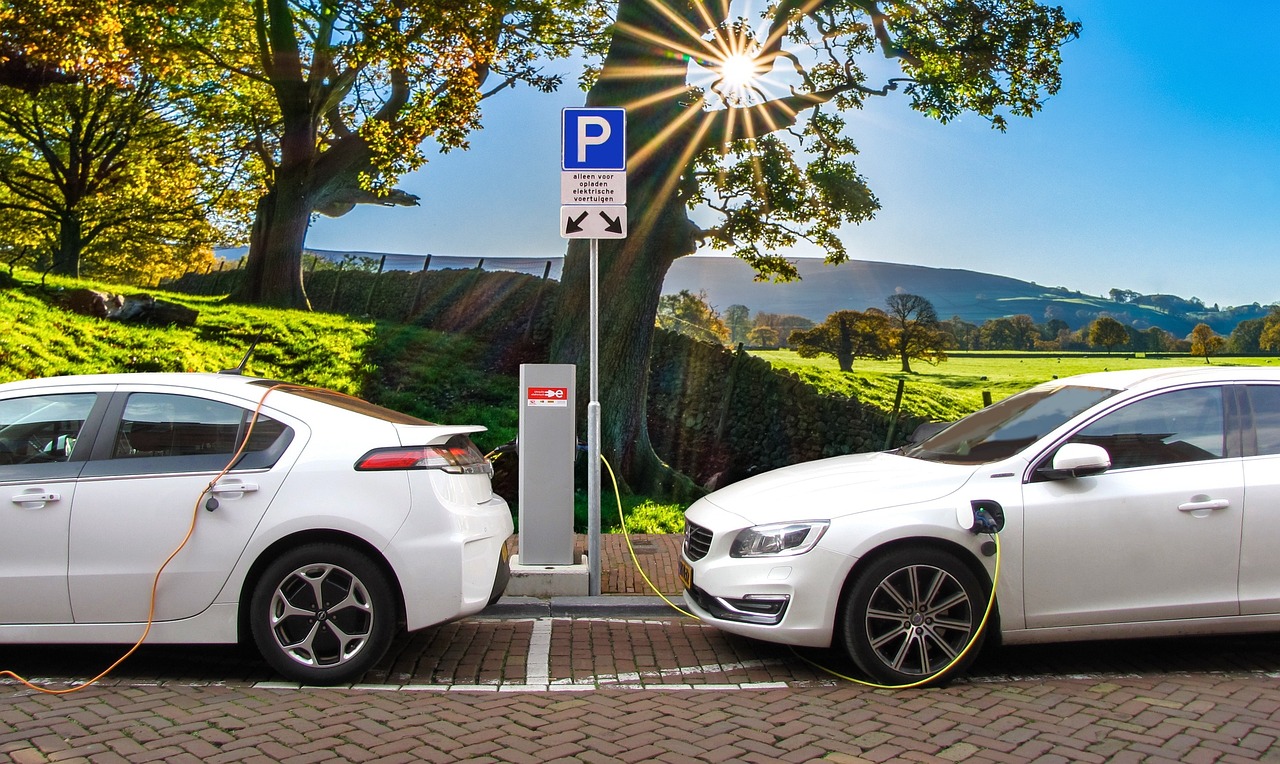Exploring the advantages of electric bikes for daily commuting, this article delves into their efficiency, environmental impact, health benefits, and more, providing a comprehensive guide for potential users.
1. Understanding Electric Bikes
Electric bikes, or e-bikes, merge traditional cycling with electric propulsion, making them a popular choice for commuters. They come in various models tailored to different riding preferences and terrains, ensuring that there’s an option for everyone.
2. Environmental Impact of E-Bikes
E-bikes significantly reduce carbon emissions compared to cars. By opting for electric bikes, commuters contribute to cleaner air and a healthier planet, making them an eco-friendly transportation choice.
- 2.1. Reduced Carbon Footprint: Switching from cars to e-bikes can drastically lower your carbon footprint, as e-bikes produce no emissions during operation, promoting sustainable living.
- 2.2. Urban Air Quality Improvement: Increased e-bike usage can lead to improved urban air quality, reducing smog and pollution levels in cities.
- 2.3. Noise Pollution Reduction: E-bikes operate quietly compared to motor vehicles, contributing to reduced noise pollution in urban areas.
3. Health Benefits of Commuting on E-Bikes
Riding an electric bike promotes physical activity while offering the convenience of assisted pedaling, making it an excellent option for individuals of all fitness levels.
- 3.1. Cardiovascular Health Improvement: Regular e-bike commuting can enhance cardiovascular health.
- 3.2. Mental Health Boost: Engaging in physical activity through e-biking can reduce stress and anxiety levels.
4. Cost-Effectiveness of E-Bikes
Electric bikes can be more economical than cars in the long run, with lower maintenance costs and no fuel expenses.
- 4.1. Lower Maintenance Costs: E-bikes generally require less maintenance than traditional vehicles.
- 4.2. Fuel Savings: By eliminating the need for gasoline, e-bike users can significantly cut down on commuting costs.
5. Convenience and Accessibility
E-bikes offer a convenient commuting solution, allowing riders to navigate through traffic easily.
- 5.1. Traffic Navigation: E-bikes can maneuver through congested traffic.
- 5.2. Parking Ease: Finding parking for e-bikes is generally easier than for cars.
6. Conclusion: Embracing E-Bikes for Daily Commutes
In conclusion, electric bikes offer numerous benefits for daily commuting, from environmental advantages to health benefits, making them a compelling choice for modern transportation solutions. Embracing e-bikes can transform daily travel experiences.

1. Understanding Electric Bikes
Understanding Electric Bikes is essential for anyone considering a more efficient and eco-friendly mode of transportation. Electric bikes, commonly referred to as e-bikes, seamlessly blend traditional cycling with electric propulsion systems, making them an increasingly popular choice for daily commuting. With a variety of features and designs tailored to diverse riding preferences and terrains, e-bikes cater to a wide range of users.
One of the key advantages of e-bikes is their ability to assist riders with electric power, which helps in overcoming challenging terrains and inclines. This feature is particularly beneficial for individuals who may find traditional biking physically demanding. E-bikes come equipped with different levels of pedal assist, allowing riders to choose how much effort they want to exert during their ride.
- Types of E-Bikes: There are several types of e-bikes available, including commuter bikes, mountain bikes, and folding models. Each type is designed to meet specific needs, whether for urban commuting, off-road adventures, or easy storage.
- Design and Features: E-bikes often include features such as integrated lights, racks for carrying cargo, and advanced display screens that show speed, distance, and battery life, enhancing the overall riding experience.
- Battery Technology: The battery is a crucial component of an e-bike, influencing its range and performance. Most modern e-bikes utilize lithium-ion batteries, which are lightweight, efficient, and have a long lifespan.
Moreover, e-bikes provide a sustainable alternative to traditional vehicles, significantly reducing the carbon footprint associated with daily commuting. By choosing an e-bike, riders contribute to cleaner air and a healthier environment. As cities continue to expand and traffic congestion increases, e-bikes offer a practical solution for navigating urban landscapes efficiently.
In conclusion, understanding electric bikes is vital for anyone looking to enhance their commuting experience. With their numerous benefits, including efficiency, sustainability, and versatility, e-bikes are paving the way for a new era of transportation.

2. Environmental Impact of E-Bikes
The Environmental Impact of E-Bikes is a critical topic as we navigate through the challenges of climate change and urban pollution. Electric bikes, or e-bikes, are emerging as a viable alternative to traditional vehicles, offering numerous environmental benefits that contribute to a sustainable future.
One of the most significant advantages of e-bikes is their ability to reduce carbon emissions. When compared to conventional cars, e-bikes produce no tailpipe emissions, which means they do not contribute to air pollution during operation. This transition from cars to e-bikes can lead to a considerable decrease in greenhouse gas emissions, making them an essential component in the fight against climate change.
| Transportation Mode | Carbon Emissions (g CO2/km) |
|---|---|
| Car | 120-250 |
| E-Bike | 0 |
Furthermore, the increased adoption of e-bikes can lead to improved urban air quality. Cities plagued by smog and pollution can benefit from the widespread use of e-bikes, which help to lower pollution levels and enhance public health. As more individuals choose e-bikes over cars, we can expect a cleaner atmosphere, promoting a healthier environment for all.
In addition to reducing air pollution, e-bikes contribute to noise pollution reduction. Unlike traditional vehicles, e-bikes operate quietly, which can significantly enhance the quality of life in urban areas. The decrease in noise contributes to a more peaceful environment, benefiting both residents and wildlife.
In conclusion, the environmental impact of e-bikes is overwhelmingly positive. By opting for e-bikes, commuters not only reduce their carbon footprint but also contribute to better air quality and less noise pollution. As we face environmental challenges, embracing e-bikes is a step towards a more sustainable and eco-friendly future.
2.1. Reduced Carbon Footprint
Switching from traditional vehicles to electric bikes (e-bikes) can lead to a significant reduction in your carbon footprint. Unlike cars, e-bikes produce no emissions during operation, which makes them an environmentally friendly alternative for daily commuting. This transition not only supports sustainable living but also plays a crucial role in environmental conservation.
When we consider the environmental impact of our transportation choices, it’s evident that e-bikes stand out. For instance:
- Energy Consumption: E-bikes require significantly less energy compared to cars, making them a more efficient mode of transport.
- Pollution Reduction: By using e-bikes, we contribute to a decrease in air pollution, which is essential for improving overall urban air quality.
- Climate Change Mitigation: Reducing carbon emissions from vehicles is vital in combatting climate change, and e-bikes are a practical solution.
In cities where traffic congestion and air quality are major concerns, the increased adoption of e-bikes can lead to a noticeable improvement in public health. With fewer cars on the road, we can expect a reduction in smog and other harmful pollutants that contribute to respiratory issues and other health problems.
Furthermore, e-bikes contribute to a quieter urban environment. The reduction in noise pollution from fewer motor vehicles not only enhances the quality of life for residents but also encourages more people to consider cycling as a viable commuting option.
In conclusion, embracing e-bikes as a primary mode of transportation can lead to a drastic reduction in individual carbon footprints. By making this switch, we not only benefit ourselves but also contribute to a healthier planet for future generations.
2.1.1. Comparison with Cars
Comparison of E-Bikes and Cars: A Sustainable Choice
When it comes to daily commuting, electric bikes (e-bikes) stand out as a more sustainable alternative to traditional cars. This comparison delves into the energy consumption, emissions, and overall impact of both modes of transportation, highlighting why e-bikes are becoming increasingly popular among eco-conscious commuters.
| Aspect | E-Bikes | Cars |
|---|---|---|
| Energy Consumption | Approximately 1.5 kWh per 100 km | About 8-12 kWh per 100 km |
| Emissions | No harmful emissions | Produces significant CO2 and pollutants |
| Cost of Operation | Lower maintenance and charging costs | Higher fuel and maintenance costs |
| Health Benefits | Promotes physical activity | Minimal physical activity |
Energy Efficiency: E-bikes are incredibly energy-efficient, consuming far less energy than cars for the same distance. This efficiency not only translates to reduced costs for the rider but also contributes to lower energy demand overall.
Environmental Impact: One of the most significant advantages of e-bikes is their zero emissions during operation. In contrast, cars emit greenhouse gases and other pollutants that contribute to climate change and urban air quality issues. By choosing e-bikes, individuals can actively participate in reducing their carbon footprint.
Urban Mobility: E-bikes offer a practical solution for navigating congested urban areas. They can easily maneuver through traffic, often allowing riders to reach their destinations faster than cars. This not only saves time but also reduces traffic congestion, further benefiting the environment.
In conclusion, the comparison between e-bikes and cars clearly shows that e-bikes are a more sustainable and efficient option for daily travel. By opting for e-bikes, commuters can enjoy a healthier lifestyle while contributing to a cleaner planet.
2.1.2. Urban Air Quality Improvement
Urban Air Quality Improvement
The rise in electric bike (e-bike) usage is proving to be a game changer for urban air quality. As cities grapple with the challenges of pollution and smog, e-bikes offer a cleaner alternative to traditional vehicles. Unlike cars, e-bikes produce no tailpipe emissions, which significantly contributes to reducing harmful pollutants in the atmosphere.
In urban environments, where traffic congestion is prevalent, the shift to e-bikes can lead to noticeable improvements in air quality. Studies show that increased e-bike adoption can lead to a decrease in nitrogen dioxide (NO2) and particulate matter (PM), both of which are detrimental to public health. By replacing short car trips with e-bike rides, cities can effectively reduce the volume of harmful emissions that contribute to smog formation.
| Pollutants | Source | Impact on Health |
|---|---|---|
| Nitrogen Dioxide (NO2) | Vehicles | Respiratory problems, increased asthma risk |
| Particulate Matter (PM) | Burning fossil fuels | Cardiovascular diseases, lung cancer |
Moreover, the transition to e-bikes can also foster a healthier lifestyle for riders. With the convenience of assisted pedaling, more individuals are encouraged to cycle regularly, promoting physical activity and reducing reliance on cars. This shift not only benefits personal health but also contributes to a reduction in traffic noise, creating a more pleasant urban environment.
As cities continue to explore sustainable transportation solutions, e-bikes stand out as a viable option. Their ability to improve urban air quality, combined with the health benefits they offer, positions them as a key player in the fight against urban pollution.
In conclusion, the increased use of e-bikes can lead to significant improvements in urban air quality, making them an essential component of future urban transportation strategies.
2.2. Noise Pollution Reduction
Noise Pollution Reduction is a significant benefit of using electric bikes (e-bikes) in urban environments. As cities grow and populations increase, the challenge of managing noise pollution becomes more pressing. E-bikes offer a quieter alternative to traditional motor vehicles, which can be a major source of urban noise.
Unlike cars and motorcycles, which produce loud engine sounds and exhaust noise, e-bikes operate with minimal noise. This quiet operation contributes to a more peaceful atmosphere, allowing residents and pedestrians to enjoy their surroundings without the constant hum of traffic.
Furthermore, the reduction of noise pollution has several positive implications for urban living:
- Improved Quality of Life: Less noise leads to a more pleasant living environment, enhancing the overall well-being of residents.
- Increased Safety: Quieter streets allow pedestrians and cyclists to hear their surroundings better, reducing the risk of accidents.
- Enhanced Urban Planning: Cities can become more livable and attractive when noise pollution is minimized, encouraging more people to engage in outdoor activities.
In addition to these benefits, e-bikes can help reduce the stress levels associated with noisy commutes. Riders can enjoy a more serene experience while traveling, making their daily journeys not only more efficient but also more enjoyable.
Overall, the adoption of e-bikes in urban areas presents a sustainable solution to the challenge of noise pollution. By choosing e-bikes over traditional vehicles, commuters can contribute to a quieter, more harmonious city life.

3. Health Benefits of Commuting on E-Bikes
Commuting on electric bikes, or e-bikes, provides a unique blend of physical activity and convenience, making them an ideal choice for individuals across various fitness levels. Not only do e-bikes offer the thrill of cycling, but they also promote a healthier lifestyle without the intimidation that often accompanies traditional biking.
One of the most significant advantages of e-biking is its ability to enhance cardiovascular health. Regularly riding an e-bike can lead to improved heart function, as it encourages users to engage in physical activity at their own pace. The pedal-assist feature allows riders to choose how much effort they want to exert, making it easier to build stamina and endurance over time. This low-impact exercise is beneficial for those recovering from injuries or for individuals who may find traditional cycling too strenuous.
Furthermore, e-biking can also provide a mental health boost. Engaging in physical activity is known to release endorphins, which can alleviate feelings of stress and anxiety. The combination of fresh air, outdoor scenery, and the joy of movement can greatly enhance one’s mood, making commuting a more enjoyable experience. Additionally, the social aspect of riding with friends or joining local e-bike groups can foster connections and a sense of community.
Another crucial aspect to consider is the accessibility of e-bikes. They cater to a diverse range of riders, including those who may not feel confident on a traditional bike. The electric assist feature can help individuals tackle challenging terrains and long distances, making cycling a feasible option for more people. This inclusivity encourages a broader audience to embrace cycling as a sustainable mode of transport.
In conclusion, commuting on e-bikes not only promotes physical fitness but also supports mental well-being and accessibility. By choosing e-bikes as a commuting option, individuals can enjoy a healthier lifestyle while contributing to a more sustainable future.
3.1. Cardiovascular Health Improvement
Regular commuting on electric bikes (e-bikes) is not just a convenient mode of transportation; it also offers significant health benefits, particularly for cardiovascular health. Engaging in this form of low-impact exercise can strengthen the heart, enhance circulation, and improve overall cardiovascular fitness.
One of the primary advantages of e-bike commuting is that it provides a gentle workout for individuals of all fitness levels. Unlike traditional cycling, where the physical exertion can be daunting, e-bikes offer pedal assist, allowing riders to adjust the intensity of their workout. This feature is especially beneficial for those who may be returning to exercise after a long break or who are managing health conditions.
Studies have shown that regular physical activity, such as cycling, can lead to a reduction in heart disease risk. By incorporating e-bike commuting into one’s daily routine, individuals can enjoy a consistent cardiovascular workout that promotes heart health. The act of cycling increases heart rate, which in turn improves blood circulation and helps lower blood pressure.
Moreover, e-bikes encourage longer rides and more frequent use compared to traditional bicycles, as the electric assist makes it easier to tackle hills and longer distances. This increased engagement in physical activity can lead to significant improvements in cardiovascular endurance over time.
In addition to physical benefits, e-bike commuting can also have positive effects on mental health. The combination of exercise and being outdoors can reduce stress and anxiety, contributing to a healthier overall lifestyle. Thus, the integration of e-bikes into daily commuting not only enhances physical fitness but also promotes mental well-being.
In conclusion, regular e-bike commuting is a powerful tool for enhancing cardiovascular health. It provides an accessible, enjoyable way to engage in physical activity, ultimately leading to a healthier heart and improved quality of life.
3.2. Mental Health Boost
Engaging in physical activity through e-biking not only enhances physical fitness but also plays a crucial role in boosting mental health. The act of riding an electric bike can be a powerful antidote to the stresses of daily life, providing a unique blend of exercise, fresh air, and a sense of freedom.
When individuals engage in e-biking, they experience a surge of endorphins, often referred to as the body’s natural feel-good hormones. This release can lead to a significant reduction in feelings of stress and anxiety. Regular physical activity, such as riding an e-bike, has been shown to improve mood and overall emotional well-being.
Moreover, the rhythmic motion of pedaling, combined with the scenic views often encountered during rides, can create a meditative experience. This mindfulness aspect allows riders to escape from their daily worries and focus on the present moment, fostering a sense of calm and clarity.
In addition to the immediate mood-enhancing effects, e-biking can also contribute to long-term mental health benefits. Studies indicate that individuals who engage in regular physical activity are less likely to suffer from depression and anxiety disorders. By incorporating e-biking into their daily routines, individuals can cultivate a more resilient mindset and improve their overall emotional health.
Furthermore, e-biking can facilitate social interactions, as riders often encounter fellow cyclists or join group rides. These social connections can provide a support network, further enhancing mental well-being. The sense of community that develops among e-bike enthusiasts can lead to increased feelings of belonging and reduced feelings of isolation.
In summary, the mental health benefits of e-biking are multifaceted. From reducing stress and anxiety to promoting a sense of community, e-biking serves as an effective tool for enhancing overall mental well-being.

4. Cost-Effectiveness of E-Bikes
Cost-Effectiveness of E-Bikes
When considering transportation options, electric bikes (e-bikes) stand out as a cost-effective alternative to traditional vehicles. This section explores the various ways in which e-bikes can save you money in the long run.
- Lower Maintenance Costs: E-bikes generally incur fewer maintenance expenses than cars. With fewer moving parts and no need for oil changes, repairs are often limited to basic upkeep such as tire inflation and brake adjustments.
- No Fuel Expenses: One of the most significant savings comes from the elimination of fuel costs. E-bikes run on electricity, which is typically much cheaper than gasoline. Charging an e-bike can cost just a few cents per day, depending on usage.
- Reduced Public Transportation Fees: For those who rely on public transport, switching to an e-bike can lead to substantial savings. Monthly transit passes can be costly, while an e-bike is a one-time purchase that can last for years.
Moreover, the initial investment in an e-bike can be quickly recouped through these savings. Many riders find that after just a few months of commuting, their e-bike has paid for itself in reduced transportation costs.
In addition to direct cost savings, e-bikes offer flexibility in commuting routes. Riders can often bypass traffic congestion, leading to shorter travel times and less wear and tear on the bike compared to a car stuck in traffic.
Overall, the financial advantages of choosing an e-bike over a car are compelling. With lower maintenance costs, no fuel expenses, and potential savings from public transport fees, e-bikes present a smart investment for daily commuters.
4.1. Lower Maintenance Costs
Lower Maintenance Costs
One of the most significant advantages of electric bikes (e-bikes) is their lower maintenance costs compared to traditional vehicles. This aspect not only leads to substantial cost savings over time but also provides a reliable transportation option for daily commutes.
Traditional vehicles typically require frequent oil changes, tire rotations, and other routine maintenance, which can add up quickly. In contrast, e-bikes have fewer moving parts and do not require oil changes, leading to a simplified maintenance routine. The absence of a combustion engine means that e-bike owners can avoid many common issues associated with traditional vehicles, such as engine problems or fuel system repairs.
Moreover, e-bikes often come equipped with durable components designed to withstand daily use. For instance, electric bike batteries can last several years with proper care, and the cost of replacing them is generally lower than that of a car’s engine or transmission repairs. Regular maintenance tasks for e-bikes mainly include checking tire pressure, lubricating the chain, and ensuring the brakes are functioning properly, which are relatively simple and inexpensive.
Additionally, many e-bike manufacturers provide warranties that cover essential components, further reducing potential repair costs. This assurance encourages users to invest in e-bikes without the fear of unexpected expenses arising from complex mechanical failures.
In summary, the lower maintenance costs associated with e-bikes not only contribute to long-term financial savings but also provide peace of mind for users. With their reliable performance and minimal upkeep requirements, e-bikes stand out as a practical and economical choice for those seeking efficient transportation solutions.
| Maintenance Aspect | Traditional Vehicles | E-Bikes |
|---|---|---|
| Oil Changes | Regularly required | Not required |
| Engine Repairs | Common and costly | Rarely needed |
| Battery Replacement | Expensive | Less frequent and cheaper |
| Routine Maintenance | Complex and time-consuming | Simplified and quick |
By choosing e-bikes, commuters can enjoy a cost-effective and hassle-free mode of transportation that not only benefits their wallets but also supports a more sustainable lifestyle.
4.2. Fuel Savings
Fuel Savings is one of the most compelling reasons to consider using electric bikes for daily commuting. By eliminating the need for gasoline, e-bike users can significantly cut down on commuting costs, making electric bikes a financially smart choice for daily travel.
As fuel prices continue to rise, the cost-effectiveness of electric bikes becomes increasingly attractive. Unlike traditional vehicles that require regular refueling, e-bikes operate on electricity, which is generally much cheaper. In many areas, the cost of charging an e-bike can be as low as 10 cents per charge, allowing riders to travel up to 50 miles on a single charge.
To illustrate the financial benefits, consider the following table:
| Expense Type | Traditional Car | Electric Bike |
|---|---|---|
| Fuel Costs (Annual) | $1,500 | $120 |
| Maintenance Costs (Annual) | $500 | $100 |
| Insurance (Annual) | $1,200 | $300 |
| Total Annual Cost | $3,200 | $520 |
As shown, the annual savings when switching from a car to an e-bike can exceed $2,600. This substantial difference highlights the financial advantages of e-bikes, making them an appealing option for anyone looking to reduce their commuting expenses.
In addition to direct fuel savings, e-bike users also benefit from reduced maintenance costs, as electric bikes have fewer moving parts and do not require oil changes or complex engine repairs. This further enhances their appeal as a cost-effective transportation solution.
Ultimately, the financial benefits of using e-bikes extend beyond just fuel savings. With lower maintenance and insurance costs, e-bikes present a comprehensive solution for those looking to save money while enjoying the freedom of two-wheeled travel.

5. Convenience and Accessibility
Convenience and Accessibility are two of the most significant advantages of using electric bikes (e-bikes) for commuting. As urban areas become increasingly congested, e-bikes provide a practical alternative to traditional vehicles, enabling riders to navigate through traffic with ease.
E-bikes are designed to enhance the commuting experience by offering a level of flexibility that cars cannot match. Here are some key points to consider:
- Effortless Traffic Maneuvering: E-bikes can easily weave through congested streets and narrow lanes, allowing riders to bypass traffic jams. This ability not only saves time but also reduces frustration associated with daily commutes.
- Accessibility to Restricted Areas: Many cities have zones where cars are restricted or where parking is limited. E-bikes can access these areas, providing riders with more options for their destinations.
- Parking Convenience: Finding parking for e-bikes is generally much simpler than for cars. Riders can utilize bike racks or park indoors, which saves time and reduces the stress of searching for a parking spot.
- Cost-Effective Solution: E-bikes eliminate the need for fuel and significantly reduce maintenance costs compared to cars. This makes them a financially sound choice for daily commuting.
In addition, e-bikes promote a healthier lifestyle by encouraging physical activity while still offering the convenience of electric assistance. This makes them suitable for individuals of varying fitness levels, as riders can choose how much effort to exert during their commute.
As urban infrastructure continues to evolve, the convenience and accessibility of e-bikes will likely play a crucial role in shaping the future of transportation. By embracing e-bikes, commuters can contribute to a more sustainable and efficient urban environment.
5.1. Traffic Navigation
Traffic Navigation is a crucial aspect of urban commuting, especially in today’s fast-paced world. Electric bikes (e-bikes) have emerged as a practical solution for navigating through congested streets, offering numerous advantages over traditional vehicles.
One of the most significant benefits of e-bikes is their ability to maneuver through tight spaces. Unlike cars, which are often stuck in traffic jams, e-bikes can easily weave between vehicles, allowing riders to bypass delays and reach their destinations more efficiently. This agility not only saves time but also reduces the stress associated with daily commuting.
Moreover, e-bikes are equipped with features that enhance their traffic navigation capabilities. Many models come with powerful motors that assist riders in tackling steep hills and challenging terrains, making it easier to navigate through urban landscapes. Riders can adjust the level of assistance based on their needs, ensuring a comfortable and efficient ride.
In addition to their physical advantages, e-bikes contribute to a safer commuting environment. As more individuals opt for e-bikes, cities are increasingly adapting their infrastructure to accommodate this shift. Dedicated bike lanes and improved traffic signage are becoming more common, helping to ensure that e-bike riders can navigate urban areas safely.
Furthermore, e-bikes promote a sustainable lifestyle. By choosing to ride instead of driving, commuters help reduce congestion and lower carbon emissions, contributing to cleaner air and a healthier environment. This eco-friendly approach aligns with the growing demand for sustainable transportation options.
In conclusion, e-bikes offer an effective solution for navigating through congested traffic. Their ability to bypass delays, combined with their environmental benefits, makes them an appealing choice for commuters. As cities continue to evolve, the role of e-bikes in traffic navigation will only become more significant.
5.2. Parking Ease
Finding parking for e-bikes is generally much easier than for traditional cars, which can significantly enhance the commuting experience. E-bikes can be parked in designated bike racks, allowing riders to secure their vehicles in a safe and organized manner. Additionally, many businesses and public spaces now offer indoor parking options for e-bikes, further improving convenience.
This ease of parking not only saves time but also reduces the hassle associated with finding a parking spot in crowded urban areas. Unlike cars, which often require extensive searching for available spaces, e-bike riders can quickly locate a nearby bike rack or even park indoors. This can be particularly advantageous in busy city centers where parking is limited.
Moreover, the compact size of e-bikes means they can be parked in smaller areas, which is often not an option for larger vehicles. This flexibility allows riders to take advantage of various parking opportunities that cars simply cannot utilize.
In addition to saving time, parking e-bikes can also contribute to a more organized urban environment. With more people opting for e-bikes, cities can reduce the number of cars on the road, leading to less traffic congestion and improved air quality. As e-bike usage continues to rise, cities are likely to adapt by increasing the availability of bike parking facilities.
In conclusion, the ease of parking e-bikes not only enhances the commuting experience but also supports broader environmental goals by encouraging sustainable transportation options. As urban areas evolve, the infrastructure for e-bike parking is expected to expand, making it an even more attractive choice for commuters.

6. Range and Battery Life Considerations
Range and battery life considerations are essential aspects for anyone considering electric bikes (e-bikes) for commuting. Understanding these factors ensures that riders can plan their journeys effectively without the fear of running out of power.
The range of an e-bike refers to the distance it can travel on a single charge. This distance varies based on several factors, including:
- Battery Capacity: Measured in watt-hours (Wh), a higher capacity typically means a longer range.
- Terrain: Hilly or rough terrains can significantly reduce the distance an e-bike can travel.
- Rider Weight: Heavier riders may experience a shorter range due to increased energy consumption.
- Assist Level: Higher assist levels require more energy, which can decrease the overall range.
Battery life is another critical factor that affects the usability of e-bikes. It refers to how long the battery will last before it needs to be recharged. Key points to consider include:
- Charging Cycles: Most e-bike batteries can last between 500 to 1,000 charge cycles, depending on the quality and maintenance.
- Temperature Conditions: Extreme temperatures can affect battery performance and longevity.
- Storage Practices: Proper storage and charging practices can help extend the battery’s lifespan.
To ensure you get the most out of your e-bike’s range and battery life, consider these practical tips:
- Regular Maintenance: Keep your bike well-maintained to ensure optimal performance.
- Plan Your Route: Choose flatter routes when possible to conserve battery.
- Monitor Assist Levels: Use lower assist levels for shorter trips to save battery.
In conclusion, understanding the range and battery life of electric bikes is crucial for effective commuting. By considering the factors that influence these aspects, riders can enjoy a seamless and efficient travel experience.
6.1. Factors Affecting Range
Understanding the Range of E-Bikes
The range of an electric bike (e-bike) is a crucial factor for riders, especially those using them for daily commuting. Several elements can influence how far an e-bike can travel on a single charge, making it essential for users to consider these factors when planning their journeys. Below, we explore the key aspects that affect e-bike range.
- Terrain: The type of terrain plays a significant role in determining an e-bike’s range. Riding on flat, paved roads generally allows for a longer distance compared to hilly or rough terrains, which require more power and energy from the battery.
- Rider Weight: The weight of the rider can impact the overall efficiency of the e-bike. Heavier riders may find that their e-bike consumes more battery power, thus reducing the total range. It’s important for users to consider their weight alongside any additional cargo they may carry.
- Assist Level: Most e-bikes come with adjustable assist levels, allowing riders to choose how much help they receive from the motor. Higher assist levels will drain the battery more quickly, while lower levels can help extend the range. Riders should select an assist level based on their fitness level and the demands of the terrain.
- Battery Condition: The health and age of the e-bike’s battery can also affect range. A well-maintained battery will provide better performance and a longer range compared to an older or poorly maintained one. Regular checks and proper charging practices can enhance battery longevity and efficiency.
- Weather Conditions: External factors such as wind resistance and temperature can also influence range. Riding against strong winds or in extreme temperatures may require more energy, thereby reducing the overall distance that can be traveled.
By understanding these factors, e-bike users can better plan their trips and make informed decisions about their commuting needs. This knowledge not only enhances the riding experience but also ensures that users can maximize the efficiency of their electric bikes.
6.2. Battery Maintenance Tips
Maintaining your e-bike’s battery is crucial for ensuring its longevity and optimal performance. Here are some essential tips to help you take care of your e-bike battery:
- Charge Regularly: It is advisable to charge your battery regularly, even if you haven’t used your e-bike for a while. Keeping the battery at a charge level between 20% and 80% is ideal, as this range helps to prolong battery life.
- Avoid Complete Discharge: Try not to let your battery fully discharge. Frequent deep discharges can significantly reduce the lifespan of lithium-ion batteries commonly used in e-bikes.
- Store Properly: If you plan to store your e-bike for an extended period, make sure the battery is charged to about 50% and kept in a cool, dry place. Extreme temperatures can adversely affect battery performance.
- Keep Connections Clean: Regularly check and clean the battery terminals and connectors. Dirt and corrosion can impede the charging process and reduce efficiency.
- Use the Right Charger: Always use the manufacturer’s recommended charger. Using an incompatible charger can lead to overcharging or undercharging, which can damage the battery.
- Monitor Temperature: Avoid exposing your battery to extreme heat or cold, as this can affect its performance. Ideally, keep it at room temperature during use and storage.
By following these battery maintenance tips, you can significantly extend the lifespan of your e-bike’s battery, ensuring reliable performance and reducing the need for costly replacements over time. Proper care not only enhances your riding experience but also contributes to sustainable commuting practices.

7. Choosing the Right E-Bike for Commuting
Choosing the Right E-Bike for Commuting is essential for ensuring a comfortable and efficient travel experience. With the increasing popularity of electric bikes, it’s crucial to understand how to select the best model that meets your unique needs.
When considering an electric bike for commuting, several factors come into play:
- Design: The design of the e-bike should align with your commuting style. For instance, if you navigate through busy urban environments, a lightweight and compact model may be ideal. Conversely, if you plan to ride on rough terrains, a mountain e-bike with robust tires and suspension would be more suitable.
- Features: Look for essential features such as battery capacity, motor power, and braking systems. A higher battery capacity allows for longer rides without the need for frequent charging, while a powerful motor can provide better assistance on inclines.
- Personal Needs: Consider your personal preferences and commuting requirements. If you have to travel long distances, an e-bike with a longer range and comfortable seating is essential. Additionally, think about whether you need folding capabilities for easy storage or transport.
It’s also important to test ride different models to assess their comfort and handling. Pay attention to the fit of the bike, ensuring that it matches your height and riding style. A well-fitted e-bike can significantly enhance your commuting experience.
In summary, selecting the right electric bike involves careful consideration of its design, features, and your personal commuting needs. By doing so, you can ensure a comfortable and efficient ride that meets your daily travel requirements.
7.1. Types of E-Bikes
Types of E-Bikes: A Comprehensive Overview
Electric bikes, commonly known as e-bikes, are revolutionizing the way we commute. They come in various types, each tailored for specific riding conditions and user preferences. Understanding these types can help potential riders choose the right e-bike for their needs.
| Type of E-Bike | Features | Best For |
|---|---|---|
| Commuter E-Bikes | Designed for urban riding, lightweight, often equipped with fenders and lights. | Daily commuting in city environments. |
| Mountain E-Bikes | Robust frames, wider tires, and enhanced suspension systems for off-road terrain. | Trail riding and rugged landscapes. |
| Folding E-Bikes | Compact design, easily foldable for storage or transport. | Urban dwellers with limited space or those using public transport. |
| Hybrid E-Bikes | Combines features of road and mountain bikes, versatile for various terrains. | Riders looking for a multi-purpose bike. |
| Fat Tire E-Bikes | Wider tires for better traction on sand and snow. | Adventurers seeking to ride in diverse conditions. |
Choosing the right type of e-bike is essential for maximizing the riding experience. Each model serves a unique purpose, ensuring that there is an e-bike suitable for everyone, whether for daily commuting, recreational riding, or tackling challenging terrains.
In conclusion, understanding the different types of e-bikes allows riders to make informed decisions based on their specific needs and riding environments. This knowledge contributes to a more enjoyable and efficient commuting experience.
7.2. Essential Features to Look For
When selecting an electric bike (e-bike) for your commuting needs, it’s crucial to assess several essential features that can greatly influence your riding experience. These features not only enhance performance but also ensure that your e-bike aligns with your specific requirements.
- Battery Capacity: The battery capacity determines how far you can travel on a single charge. Look for e-bikes with a capacity of at least 400Wh for daily commutes, as this typically offers a range of 20 to 50 miles, depending on terrain and riding style.
- Motor Power: E-bike motors are usually rated in watts. A motor with 250W to 750W is ideal for commuting, providing sufficient power to tackle hills and maintain speed without excessive effort.
- Frame Design: The frame design impacts not only the bike’s aesthetics but also its comfort and handling. Consider whether you prefer a step-through frame for easy mounting or a traditional frame for a more sporty feel.
- Weight: The overall weight of the e-bike affects portability and ease of handling. Lighter models are generally easier to maneuver and transport, especially if you need to carry your bike up stairs or onto public transport.
- Braking System: Safety is paramount, so evaluate the braking system. Hydraulic disc brakes offer superior stopping power and are recommended for urban riding, especially in wet conditions.
- Display and Controls: A clear display that shows battery life, speed, and distance traveled can enhance your riding experience. Look for user-friendly controls that allow you to adjust assist levels with ease.
- Suspension: If you plan to ride on rough terrains or bumpy roads, consider e-bikes with front or full suspension for increased comfort and control.
In conclusion, carefully evaluating these essential features will help you choose an e-bike that not only meets your commuting needs but also enhances your overall riding experience. By investing time in selecting the right model, you can enjoy a smooth, efficient, and enjoyable commute.

8. Safety Tips for E-Bike Riders
Safety is paramount for e-bike riders, and understanding best practices can help prevent accidents and ensure a secure commuting experience. As the popularity of electric bikes continues to grow, it is essential for riders to prioritize their safety while enjoying the numerous benefits that e-bikes offer.
- Wear Protective Gear: Always wear a helmet, as it significantly reduces the risk of head injuries in case of an accident. Additionally, consider wearing gloves, knee pads, and reflective clothing for enhanced visibility.
- Follow Traffic Rules: Familiarize yourself with local traffic laws. Obeying signals and signs is crucial for your safety and the safety of others on the road.
- Stay Alert: Always keep an eye on your surroundings. Be aware of pedestrians, other cyclists, and vehicles. Avoid distractions such as using your phone while riding.
- Use Lights and Reflectors: Equip your e-bike with front and rear lights, as well as reflectors, especially when riding at night or in low-light conditions. This increases your visibility to other road users.
- Maintain Your E-Bike: Regularly check your e-bike’s brakes, tires, and battery to ensure everything is functioning properly. A well-maintained bike is crucial for safe riding.
- Practice Defensive Riding: Always anticipate potential hazards. Ride at a safe speed and be prepared to react to sudden obstacles or changes in traffic conditions.
- Ride in Designated Areas: Whenever possible, use bike lanes or paths designed for cyclists. These areas are typically safer and help separate you from motor vehicle traffic.
By incorporating these best practices, e-bike riders can significantly enhance their safety on the road. Remember, a cautious approach not only protects you but also promotes a positive image of e-biking in your community.
8.1. Wearing Protective Gear
Wearing protective gear while riding electric bikes is not just a recommendation; it is a crucial aspect of ensuring safety and minimizing the risk of injuries. As the popularity of e-bikes continues to grow, understanding the importance of protective equipment becomes essential for all riders.
When it comes to protective gear, several key items should be considered:
- Helmets: A properly fitted helmet is the most important piece of gear. It protects the head in the event of a fall or collision, significantly reducing the risk of serious injuries.
- Knee and Elbow Pads: These pads provide additional protection for joints, which are vulnerable during falls. They can help prevent scrapes and bruises.
- Gloves: Wearing gloves not only improves grip on the handlebars but also protects the hands from abrasions in case of an accident.
- Reflective Clothing: Visibility is critical, especially in low-light conditions. Reflective gear helps other road users see the rider, reducing the risk of accidents.
- Sturdy Footwear: Proper shoes offer better control over the bike and protect the feet from injury.
Statistics show that wearing appropriate protective gear can reduce the severity of injuries sustained in accidents. According to studies, riders who wear helmets are up to 70% less likely to suffer a head injury compared to those who do not.
Moreover, the psychological benefits of wearing protective gear cannot be overlooked. Knowing that you are equipped with the right safety measures can boost confidence while riding, allowing for a more enjoyable experience.
In conclusion, the use of helmets and other protective gear is essential for minimizing injury risk while riding. It contributes to safer commuting not only for individual riders but also promotes a culture of safety among all e-bike users. By prioritizing safety, we can enjoy the numerous benefits of e-bikes while reducing the potential for accidents.
8.2. Understanding Traffic Laws
When it comes to riding electric bikes, understanding local traffic laws is crucial for ensuring a safe and enjoyable experience. Each region may have specific regulations governing e-bike usage, and familiarizing yourself with these laws can significantly enhance your riding habits and overall safety.
Traffic laws typically cover various aspects of e-bike operation, including:
- Speed Limits: Many areas impose speed limits on e-bikes to ensure the safety of both riders and pedestrians.
- Bike Lane Usage: Some jurisdictions require e-bike riders to use designated bike lanes where available, promoting safer navigation through traffic.
- Helmet Regulations: Depending on local laws, wearing a helmet may be mandatory for e-bike riders, especially for younger individuals.
- Age Restrictions: Certain regions set minimum age requirements for e-bike riders, ensuring that younger riders have the necessary skills and maturity.
- Equipment Standards: Local laws may dictate specific equipment that e-bikes must have, such as lights, bells, or reflectors, to enhance visibility and safety.
By adhering to these regulations, riders not only promote their own safety but also contribute to a culture of responsible riding within their communities. Understanding traffic laws can also help in avoiding fines or penalties, making the experience of riding an e-bike more enjoyable.
Moreover, being aware of local laws can enhance your confidence as a rider. This knowledge allows you to navigate different environments more effectively, whether you’re commuting through busy urban streets or enjoying a leisurely ride in a park. Engaging with local cycling communities can also provide insights into best practices and emerging regulations, fostering a sense of camaraderie and shared responsibility among riders.
In conclusion, familiarizing yourself with local traffic laws regarding e-bike usage is essential for promoting safe and legal riding. By doing so, you not only protect yourself but also contribute to a positive perception of e-bikes as a viable transportation option for everyone.

9. Community and Social Benefits of E-Bikes
Electric bikes, or e-bikes, have become more than just a mode of transportation; they are fostering a vibrant community among riders. This sense of community encourages social interactions and promotes a culture of active transportation within neighborhoods. Below, we explore how e-bikes contribute to social connections and community engagement.
- Building Connections: Riding e-bikes often leads to spontaneous social interactions among cyclists. Whether it’s a friendly nod to a fellow rider or stopping to chat at a local café, these moments help foster friendships. The shared experience of cycling creates a bond among riders, enhancing the sense of belonging within the community.
- Participating in Local Events: Many cities organize e-bike events, such as group rides and community festivals. These gatherings provide an excellent opportunity for riders to connect with others who share their passion for cycling. Participating in such events can also raise awareness about the benefits of e-bikes, encouraging more people to join the movement.
- Encouraging Active Lifestyles: The presence of e-bikes in neighborhoods promotes a culture of active transportation. As more people opt for e-bikes over cars, it creates an environment where walking, cycling, and other forms of active travel are normalized. This shift not only benefits individual health but also enhances community well-being.
- Creating Support Networks: E-bike riders often form support networks, sharing tips on maintenance, routes, and safety. These networks can be crucial for new riders, helping them navigate their e-biking journey with confidence. Additionally, local bike shops may host workshops, further strengthening community ties.
In conclusion, e-bikes serve as a catalyst for community building, encouraging social interactions and promoting healthier lifestyles. As more individuals embrace e-biking, the resulting connections can lead to stronger, more engaged neighborhoods.
9.1. Building Connections
Building Connections through E-Biking
Riding electric bikes, or e-bikes, is not just about transportation; it is a pathway to social interaction and community building. As more people embrace e-biking, the opportunities for connections among riders increase significantly.
When cyclists share the road, they often share experiences, stories, and tips. This shared interest in cycling can lead to friendships that extend beyond the bike path. Whether it’s a casual chat at a traffic light or a longer conversation during a group ride, e-biking fosters a sense of camaraderie among riders.
- Group Rides: Participating in organized group rides allows e-bike enthusiasts to meet others who share their passion. These events often promote a sense of belonging and community.
- Online Forums and Social Media: Many riders connect through online platforms where they can share experiences, seek advice, and plan meet-ups, further enhancing their social network.
- Local Events: Cities often host e-bike festivals and workshops, providing opportunities for riders to learn, interact, and celebrate their love for cycling.
Additionally, e-bikes can help break down barriers among different age groups and backgrounds. Riders from various walks of life come together, united by their love for cycling. This diversity enriches the community and fosters mutual respect and understanding.
Moreover, as e-biking becomes more popular, communities may develop dedicated cycling paths and facilities, further enhancing the social aspect of riding. These improvements not only make riding safer but also encourage more people to join the e-biking community.
In conclusion, the act of riding e-bikes goes beyond mere transportation. It is a powerful tool for building connections, fostering friendships, and promoting community engagement. Embracing e-biking can lead to a more connected and vibrant community.
9.2. Participating in Local Events
Participating in local e-bike events is a fantastic way for riders to connect with fellow enthusiasts and promote the many advantages of electric biking within their communities. These events serve as a platform for riders to share experiences, learn from one another, and foster a sense of camaraderie.
Many cities around the world host a variety of e-bike events, ranging from group rides to educational workshops and community festivals. These gatherings not only celebrate the joy of riding but also highlight the environmental benefits of using electric bikes as a sustainable mode of transportation.
- Group Rides: These organized rides allow participants to explore local trails and urban areas together, promoting safety and community spirit.
- Workshops: Educational sessions often cover topics such as e-bike maintenance, safety tips, and the latest technology in electric biking.
- Festivals: Many cities celebrate e-bikes with festivals featuring vendors, demonstrations, and opportunities to test ride various models.
Moreover, participating in these events can significantly enhance the visibility of e-bikes in the community. As more people see riders enjoying their e-bikes, curiosity is piqued, and interest in adopting e-bikes as a viable commuting option grows. This increased awareness can lead to more supportive infrastructure, such as bike lanes and charging stations, making it easier for everyone to choose electric biking.
Additionally, local e-bike events often feature discussions on policy advocacy, emphasizing the importance of creating a supportive environment for cyclists. Engaging with local government officials during these events can lead to improved regulations and funding for biking infrastructure.
In conclusion, participating in local e-bike events not only enriches the riding experience but also plays a crucial role in advocating for the benefits of electric biking. By coming together as a community, riders can help shape a more sustainable future for urban transportation.

10. E-Bikes vs. Traditional Bikes: A Comparison
Understanding the differences between electric bikes (e-bikes) and traditional bicycles is essential for potential users. This knowledge allows individuals to make informed decisions tailored to their specific commuting needs and preferences.
1. Pedal Assist vs. Manual Riding
E-bikes are equipped with a pedal-assist system that provides extra power when the rider pedals, making it easier to tackle steep hills and longer distances. In contrast, traditional bikes rely solely on human power, which can be a challenge for some riders, especially over challenging terrain or during extended rides.
2. Weight Considerations
Generally, e-bikes are heavier than traditional bikes due to the inclusion of batteries and motors. This added weight can influence the handling and storage of the bike. Riders may need to consider their physical strength and storage options when choosing between the two.
3. Maintenance and Repairs
- E-Bikes: Require specialized knowledge for repairs, particularly concerning electrical components.
- Traditional Bikes: Typically easier and less expensive to maintain, with readily available parts.
4. Cost Implications
While the initial investment for an e-bike can be higher, potential savings in fuel, maintenance, and public transport costs can make them more economical in the long run. Traditional bikes, on the other hand, generally have lower upfront costs but may not offer the same range of benefits.
5. Riding Experience
The experience of riding an e-bike can be significantly different from that of a traditional bike. E-bikes provide a smoother ride, especially on inclines, while traditional bikes offer a more traditional cycling experience that some enthusiasts prefer for its simplicity and engagement.
Conclusion
In summary, the choice between e-bikes and traditional bikes largely depends on individual commuting needs, physical capability, and personal preferences. Understanding these differences can help users select the best option to enhance their daily commuting experience.
10.1. Pedal Assist vs. Manual Riding
When considering the differences between electric bikes (e-bikes) and traditional bicycles, one of the most significant features that stands out is the pedal assist technology found in e-bikes. This innovative feature provides riders with a boost while pedaling, making it easier to navigate challenging terrains such as steep hills and long distances. In contrast, traditional bikes rely solely on human power, which can be exhausting, especially for those who may not be in peak physical condition.
The benefits of pedal assist are manifold. For instance, riders can maintain a higher average speed with less effort, allowing them to cover more ground in less time. This is particularly advantageous for commuters who need to arrive at work or appointments without breaking a sweat. The assistance provided by e-bikes can also encourage less active individuals to engage in cycling, thus promoting a healthier lifestyle.
Moreover, pedal assist can be adjusted based on the rider’s preference and the terrain. Many e-bikes offer multiple levels of assistance, allowing users to customize their riding experience. For example, a rider might select a higher level of assist when climbing steep hills and a lower level on flat surfaces. This adaptability is a distinct advantage over traditional bikes, where the rider must rely solely on their physical strength.
In addition to making cycling more accessible, e-bikes with pedal assist can also enhance the overall enjoyment of the ride. Riders often report feeling less fatigued and more inclined to take longer rides, which can lead to increased exploration and adventure.
In conclusion, the choice between pedal assist and manual riding boils down to personal preference and lifestyle. While traditional bikes offer a pure cycling experience, e-bikes provide a more versatile option that caters to a broader audience, making cycling an enjoyable and practical means of transportation.
10.2. Weight Considerations
When considering the choice between electric bikes (e-bikes) and traditional bicycles, one of the most significant factors to evaluate is the weight of the bike. E-bikes tend to be heavier than their traditional counterparts due to the inclusion of batteries and motors. This added weight can influence various aspects of cycling, particularly for commuters.
The average e-bike weighs between 40 to 70 pounds, while traditional bikes typically range from 20 to 30 pounds. This difference in weight can affect handling and maneuverability. For instance, navigating through tight spaces or making quick turns may require more effort with an e-bike. Additionally, the weight can impact storage decisions. Commuters may find it more challenging to lift and store an e-bike in compact urban living situations.
Moreover, the weight of an e-bike can also affect battery efficiency and overall ride experience. Heavier bikes may require more energy to pedal, especially when the electric assist is not engaged. This can lead to a sense of fatigue during longer rides or when tackling steep inclines. However, many users find that the electric assist compensates for this weight, providing a smoother and less strenuous ride compared to traditional bikes.
For those considering an e-bike, it is essential to test ride different models to find one that balances weight and performance. Riders should also consider their commuting routes and whether the weight of the bike will impact their daily travel experience. Ultimately, while the weight of e-bikes may present challenges, they also offer significant benefits that can outweigh these concerns.

11. The Future of E-Bikes in Urban Transportation
The Future of E-Bikes in Urban Transportation
As urban landscapes continue to evolve, electric bikes (e-bikes) are emerging as a crucial component of sustainable transportation solutions. Their ability to alleviate traffic congestion and provide eco-friendly commuting options is transforming the way residents navigate cities.
1. Integration with Public Transport
One of the most significant trends in urban transportation is the seamless integration of e-bikes with public transport systems. Many cities are now offering bike-sharing programs and designated parking areas at transit hubs, allowing commuters to easily switch between e-bikes and buses or trains. This multi-modal approach not only enhances accessibility but also encourages more people to opt for sustainable travel methods.
2. Innovations in E-Bike Technology
The future of e-bikes is also being shaped by ongoing technological advancements. Innovations such as improved battery efficiency, lightweight materials, and smart connectivity features are making e-bikes more appealing to a broader audience. For instance, GPS-enabled systems can help users find optimal routes, while advanced battery management systems extend the range of e-bikes, making them a viable option for longer commutes.
3. Urban Planning and Infrastructure Development
As cities recognize the benefits of e-bikes, urban planners are increasingly incorporating bike lanes and infrastructure designed specifically for cyclists. This includes dedicated e-bike lanes, secure parking facilities, and charging stations, which not only enhance safety but also promote a culture of cycling within urban environments.
4. Environmental Impact and Sustainability
With a growing emphasis on sustainability, e-bikes offer a green alternative to traditional vehicles. By reducing reliance on fossil fuels, e-bikes contribute to lower carbon emissions and improved air quality in urban areas. As more individuals choose e-bikes over cars, cities can expect significant improvements in public health and environmental conditions.
5. Conclusion: Embracing E-Bikes for a Sustainable Future
In conclusion, the future of e-bikes in urban transportation is bright. As cities adapt to the challenges of congestion and pollution, e-bikes will play an integral role in creating a more sustainable and efficient urban mobility landscape. By embracing this innovative mode of transport, residents can contribute to a healthier planet while enjoying the numerous benefits of e-biking.
11.1. Integration with Public Transport
Integration of E-Bikes with Public Transport is revolutionizing the way we think about commuting in urban areas. As cities strive to reduce traffic congestion and promote sustainable travel options, the synergy between electric bikes (e-bikes) and public transport systems is becoming increasingly vital.
By allowing commuters to easily switch between e-bikes and public transport, cities are fostering a multi-modal commuting environment. This integration offers several benefits:
- Seamless Transfers: Commuters can effortlessly transition from e-bikes to buses or trains, ensuring they reach their destinations without unnecessary delays.
- Expanded Reach: E-bikes can cover the last mile, connecting riders to public transport hubs that may be too far to walk.
- Reduced Dependence on Cars: This integration encourages individuals to leave their cars at home, contributing to lower traffic levels and reduced carbon emissions.
Many cities are responding to this trend by providing dedicated e-bike parking at public transport stations, making it easier for commuters to find safe spots to store their bikes. Additionally, some transport systems are incorporating bike-sharing programs, allowing individuals to rent e-bikes for short trips, which further enhances the convenience of using public transport.
Furthermore, as urban planners recognize the importance of sustainable transport solutions, they are increasingly designing infrastructure that supports e-bikes. This includes bike lanes, charging stations, and secure parking facilities at transit points, which collectively promote e-bike usage.
In conclusion, the integration of e-bikes into public transport systems not only enhances the commuting experience but also plays a pivotal role in creating greener, more efficient urban environments. As cities continue to evolve, this trend is likely to expand, paving the way for a future where e-bikes and public transport work hand in hand to improve mobility for all.
11.2. Innovations in E-Bike Technology
Innovations in E-Bike Technology are revolutionizing the way we think about urban commuting. As cities become more congested and the need for sustainable transportation grows, electric bikes (e-bikes) are emerging as a viable solution. This section explores the latest advancements in e-bike technology that enhance performance, range, and overall user experience.
- Smart Connectivity: Modern e-bikes are equipped with smart technology that allows riders to connect their bikes to smartphones via Bluetooth. This connectivity enables features such as navigation, ride tracking, and even theft prevention through GPS tracking.
- Improved Battery Technology: Innovations in battery design, such as lithium-ion and solid-state batteries, have significantly increased the range and lifespan of e-bike batteries. Many e-bikes now offer a range of up to 100 miles on a single charge, making long commutes feasible.
- Lightweight Materials: The use of advanced materials like carbon fiber and aluminum alloys has led to the production of lighter e-bikes. This reduction in weight improves handling and makes it easier for users to pedal without assistance when desired.
- Enhanced Motor Efficiency: Newer e-bikes feature more efficient motors that provide smoother power delivery and better torque management. This results in a more natural riding experience, even on steep inclines.
- Regenerative Braking: Some e-bikes now incorporate regenerative braking systems that capture energy during braking and feed it back into the battery. This innovation helps extend battery life and improve overall efficiency.
As these technologies continue to evolve, e-bikes are becoming more accessible and appealing to a broader audience. The combination of performance enhancements, increased range, and improved user experience positions e-bikes as a key player in the future of urban transportation.
In conclusion, the ongoing advancements in e-bike technology are not only enhancing the performance and usability of these vehicles but also paving the way for their broader adoption in urban commuting. As more individuals recognize the benefits of e-bikes, we can expect to see a significant shift towards sustainable transportation solutions in cities worldwide.

12. Conclusion: Embracing E-Bikes for Daily Commutes
In today’s fast-paced world, electric bikes have emerged as a revolutionary mode of transportation, especially for daily commuting. These innovative vehicles not only enhance the commuting experience but also offer a plethora of benefits that make them a smart choice for modern urban living.
Firstly, e-bikes significantly contribute to a cleaner environment. By opting for electric bikes instead of traditional vehicles, commuters can drastically reduce their carbon emissions. This shift not only promotes sustainability but also plays a vital role in improving urban air quality. The reduction in noise pollution is another advantage, as e-bikes operate quietly, creating a more peaceful environment in busy city areas.
- Health Benefits: Riding an e-bike encourages physical activity, benefiting cardiovascular health while also providing a manageable workout for individuals of all fitness levels.
- Cost-Effectiveness: E-bikes can save users money in the long run, with lower maintenance costs and no fuel expenses compared to traditional cars.
- Convenience: E-bikes allow for easier navigation through congested traffic and simplify parking, making them an ideal choice for urban commuters.
Furthermore, the range and battery life of e-bikes are becoming increasingly impressive, allowing users to travel longer distances without the fear of running out of power. Proper battery maintenance can also extend the lifespan of these electric bikes, ensuring reliability and performance over time.
As cities continue to evolve, the adoption of e-bikes is expected to grow. They are becoming an integral part of urban transportation solutions, addressing issues such as congestion and promoting sustainable commuting options. Additionally, the integration of e-bikes with public transport systems is paving the way for more seamless travel experiences.
In conclusion, embracing electric bikes for daily commutes is not just a trend; it is a transformative choice that enhances the quality of life for commuters while contributing positively to the environment. With numerous benefits ranging from health improvements to cost savings, e-bikes are indeed a compelling option for anyone looking to modernize their commuting experience.
Frequently Asked Questions
- What are electric bikes?
Electric bikes, or e-bikes, are bicycles equipped with an electric motor that assists with pedaling. They combine traditional cycling with electric propulsion, making commuting easier and more efficient.
- How do e-bikes benefit the environment?
E-bikes significantly reduce carbon emissions compared to cars, promoting cleaner air and a healthier planet. By choosing e-bikes, you contribute to lowering your carbon footprint and supporting sustainable living.
- Are e-bikes good for health?
Absolutely! Riding an e-bike provides physical activity, which can improve cardiovascular health and boost mental well-being. They offer a low-impact workout suitable for all fitness levels.
- How do e-bikes compare in cost to traditional vehicles?
E-bikes can be more economical in the long run due to lower maintenance costs, no fuel expenses, and potential savings on public transportation fees. They are a financially smart choice for daily commuting.
- What should I consider when buying an e-bike?
When selecting an e-bike, consider factors like battery capacity, motor power, frame design, and the type of riding you plan to do. Choosing the right model ensures a comfortable and efficient commuting experience.
- Are there safety tips for e-bike riders?
Yes! Always wear protective gear, such as helmets, and familiarize yourself with local traffic laws. Staying informed and prepared enhances your safety while riding.












